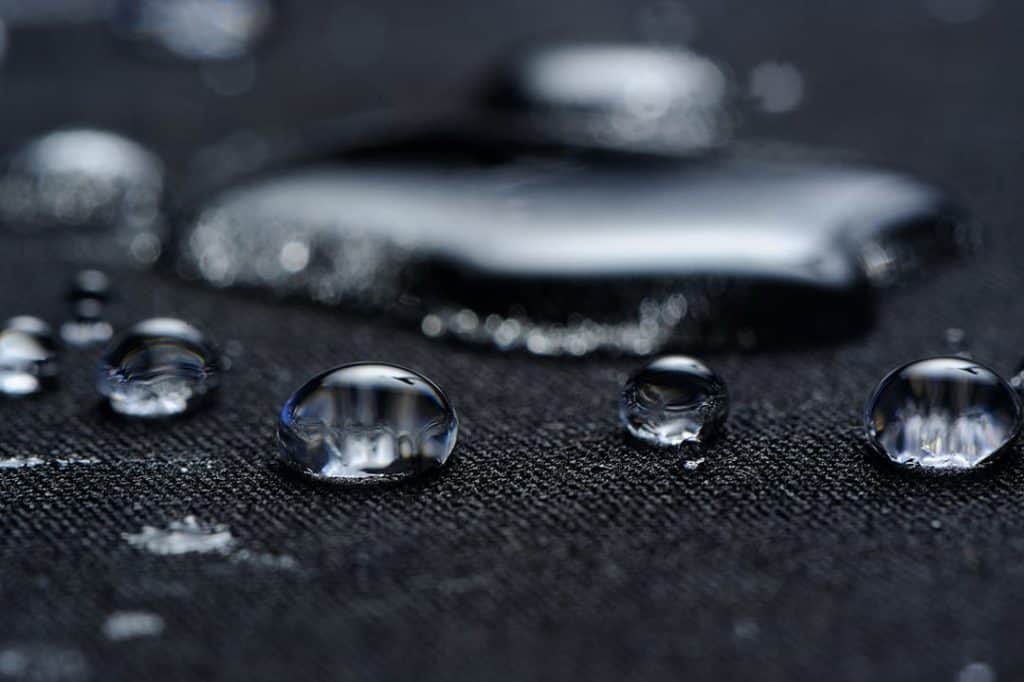Why is water-repellent and water-proof clothing unsustainable?
Discover all the environmental impacts, health concerns and challenges related to water-repellent and water-proof clothing, and if there’s any better alternative
Water-repellent and water-proof fabrics have revolutionized the fashion industry, allowing brands to manufacture garments that offer great protection against water, stains, and moisture. But at what cost?
In fact, they have found their way into numerous applications, including sportswear, outdoor and everyday clothing. However, while their benefits are apparent, it is fundamental to acknowledge and address the potential drawbacks associated with water-repellency. Through this blog, we will see the pros and cons, focusing on their environmental impacts, health concerns, and potential alternatives.
Let’s talk about chemicals…

As we have deeply explained in another blog (read more on What is the difference among water-resistant, water-repellent and waterproof clothing), water-repellent means “having a finish that resists, but is not impervious to water”. These materials feature enhanced resistance against water infiltration, this is primarily achieved through surface treatments, for example, by applying a Durable Water Repellent (DWR) coating to the garment’s exterior shell or infusing it into the fabric fibers. As a consequence, when these fabrics come into contact with water, they prompt the water to form beads and roll off, rather than allowing it to permeate through. It is almost the same for waterproof materials, which are instead “Impervious to water”. In fact, these materials are designed to prevent water from passing through them entirely. They offer the highest level of protection against water and are usually: treated with DWR, and/or laminated, and/or bonded.
What is so dangerous about the Durable Water Repellent (DWR) coating that are used for water-repellent and waterproof clothing?
Durable Water Repellent (DWR) coatings, while effective in providing water-repellent properties to fabrics, can pose environmental and health risks. The environmental concerns stem from the use of perfluorinated compounds, specifically per- and polyfluoroalkyl substances (PFAS), which are commonly used in many traditional DWR formulations.
Here are some of the bad consequences of PFAS in waterproof clothing, supported by reliable sources:
Nr. 1
Environmental contamination
PFAS are persistent chemicals, meaning they don't break down easily and can remain in the environment for a long time. They have been found in water bodies, soil, and even in wildlife worldwide (Source: National Institute of Environmental Health Sciences - NIEHS). Moreover, the production and use of PFAS in /water-repellent and waterproof clothing contribute to their release into the environment during manufacturing and disposal, leading to widespread contamination.
Nr. 2
Bioaccumulation in Wildlife
PFAS can accumulate in the tissues of living organisms, leading to bioaccumulation and biomagnification in the food chain. This process can have harmful effects on wildlife, disrupting their endocrine systems and causing reproductive issues. (Source: Environmental Science & Technology Letters - ACS Publications). Aquatic animals, in particular, are at risk of PFAS contamination due to their exposure to contaminated water. This contamination can then pass on to humans who consume seafood.
Nr. 3
Health risks
PFAS exposure has been linked to various health issues, including liver damage, thyroid disease, decreased fertility, developmental delays in children, and an increased risk of certain cancers. (Source: Environmental Working Group - EWG). The chemicals in waterproof clothing can leach into the skin, leading to potential health risks for individuals who wear them regularly. (Source: Green Science Policy Institute - Green Science Policy Institute)

What is next for the industry? Something is already changing…
Due to all these environmental and health concerns, PFAS have raised significant regulatory concerns worldwide, leading to measures to control their use and limit exposure. Many countries have implemented or are considering restrictions on PFAS in various products, including waterproof clothing.
There has also been a growing push for more sustainable and eco-friendly alternatives to traditional PFAS-based DWR coatings. Some manufacturers have started using more environmentally friendly alternatives, like plant-based or bio-based DWR coatings, to reduce the impact on the environment and human health; while others are providing PFAS-free clothing.

About Manteco, Italian premium textiles and circularity since 1943
After decades in the fashion world, in 2018, we have created the Manteco Academy project, through which we give webinars, in-person lessons and workshops on eco-design, circular economy and sustainability to numerous fashion schools, technical universities and brands worldwide. Thanks to this educative commitment and our heritage, we are often invited as guest speaker at events, panels, podcasts and conferences about sustainable fashion and circular economy.

